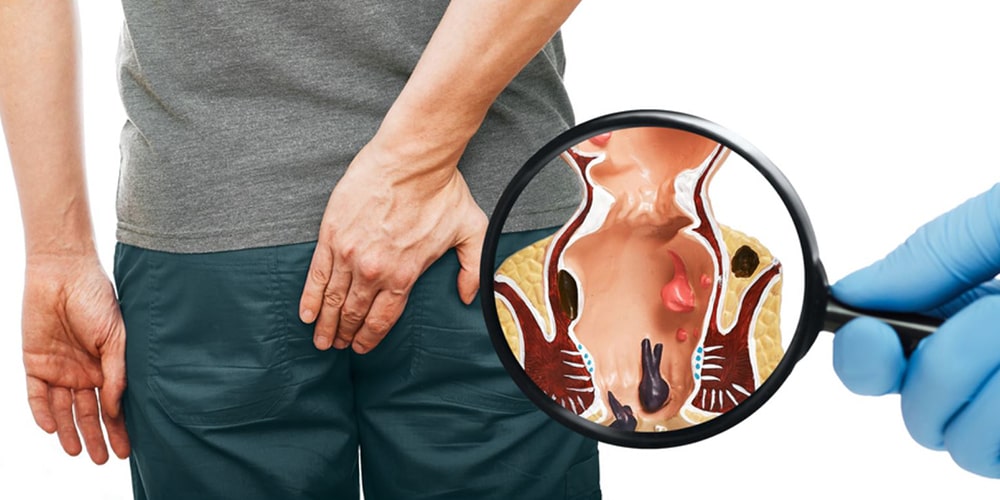
What is Piles?
Swollen veins in the anal canal are known as Piles (haemorrhoids). This common issue might be uncomfortable, but it is usually not dangerous. Internal haemorrhoids arise when veins enlarge inside the anal canal. They can also swell around the anus entrance, forming external haemorrhoids. You can have both types at the same time.
Types of Piles
Hemorrhoids can happen inside or outside the rectum. The type depends on where the swollen vein develops. Types include:
- External: Swollen veins form underneath the skin around the anus. Your anus is the canal where poop comes out. External hemorrhoids can be itchy and painful. Occasionally, they bleed. Sometimes they fill with blood that can clot. This is not dangerous, but can result in pain and swelling.
- Internal: Swollen veins form inside the rectum. Your rectum is the part of the digestive system that connects the colon (large intestine) to the anus. Internal hemorrhoids may bleed, but they usually aren’t painful.
- Prolapsed: Both internal and external hemorrhoids can prolapse, meaning they stretch and bulge outside of the anus. These hemorrhoids may bleed or cause pain.
What Causes Piles?
Hemorrhoids are usually caused by too much pressure on the veins in the pelvic and rectal area. Sitting on the toilet a long time or straining to have a bowel movement creates pressure that causes these veins to swell and stretch. Things that can lead to hemorrhoids include constipation, pregnancy, and being overweight.
Symptoms of hemorrhoids
Internal hemorrhoids often cause no discomfort. They may bleed painlessly after a bowel movement. They become a problem if they bleed too heavily or prolapse. It’s typical to see blood after a bowel movement when you have a hemorrhoid.
External hemorrhoids may also bleed after bowel movements. Because they’re exposed, they often become irritated and may itch or become painful.
Another common complication of external hemorrhoids is the formation of blood clots inside the vessel, or a thrombosed hemorrhoid. While these clots aren’t usually life-threatening, they can cause sharp, severe pain.
Proper treatment for such thrombosed hemorrhoids consists of an “incision and drainage” procedure. A surgeon or a doctor in an emergency room can perform this procedure.
Why is it Performed?
Hemorrhoid surgery is appropriate when you have:
- Very large internal hemorrhoids.
- Internal hemorrhoids that still cause symptoms after nonsurgical treatment.
- Large external hemorrhoids that cause significant discomfort and make it difficult to keep the anal area clean.
- Both internal and external hemorrhoids.
- Had other treatments for hemorrhoids (such as rubber band ligation) that have failed.
Piles (Hemorrhoid) Surgery Overview
Hemorrhoid surgery is performed to remove hemorrhoids. You will be given general anesthesia or spinal anesthesia so that you will not feel pain.
Incisions are made in the tissue around the hemorrhoid. The swollen vein inside the hemorrhoid is tied off to prevent bleeding, and the hemorrhoid is removed. The surgical area may be sewn closed or left open. Medicated gauze covers the wound.
Surgery can be done with a knife (scalpel), a tool that uses electricity (cautery pencil), or a laser.
The operation is usually done in a surgery center. You will most likely go home the same day (outpatient).
There is a procedure that uses a circular stapling device to remove hemorrhoidal tissue and close the wound. No incision is made. In this procedure, the hemorrhoid is lifted and then “stapled” back into place in the anal canal. This surgery is called stapled hemorrhoidopexy. People who have stapled surgery may have less pain after surgery than people who have the traditional hemorrhoid surgery. But the stapled surgery is more expensive. And people who have stapled surgery are more likely to have hemorrhoids come back and need surgery again.footnote1
Doppler-guided hemorrhoidectomy is a procedure that uses a scope with a special probe to locate the hemorrhoidal arteries so that less tissue is removed. Some studies show that it is less painful but more long term studies are needed to compare it with other procedures.
Make an appointment
Our Doctors
-
Dr. Sujoy Kr. Bhattacharjee
Joint Replacement -
Dr. (Maj.) Mukesh Garg
Orthopaedics & Arthroscopy -
Dr. Kamal Verma
Neuro Sciences


